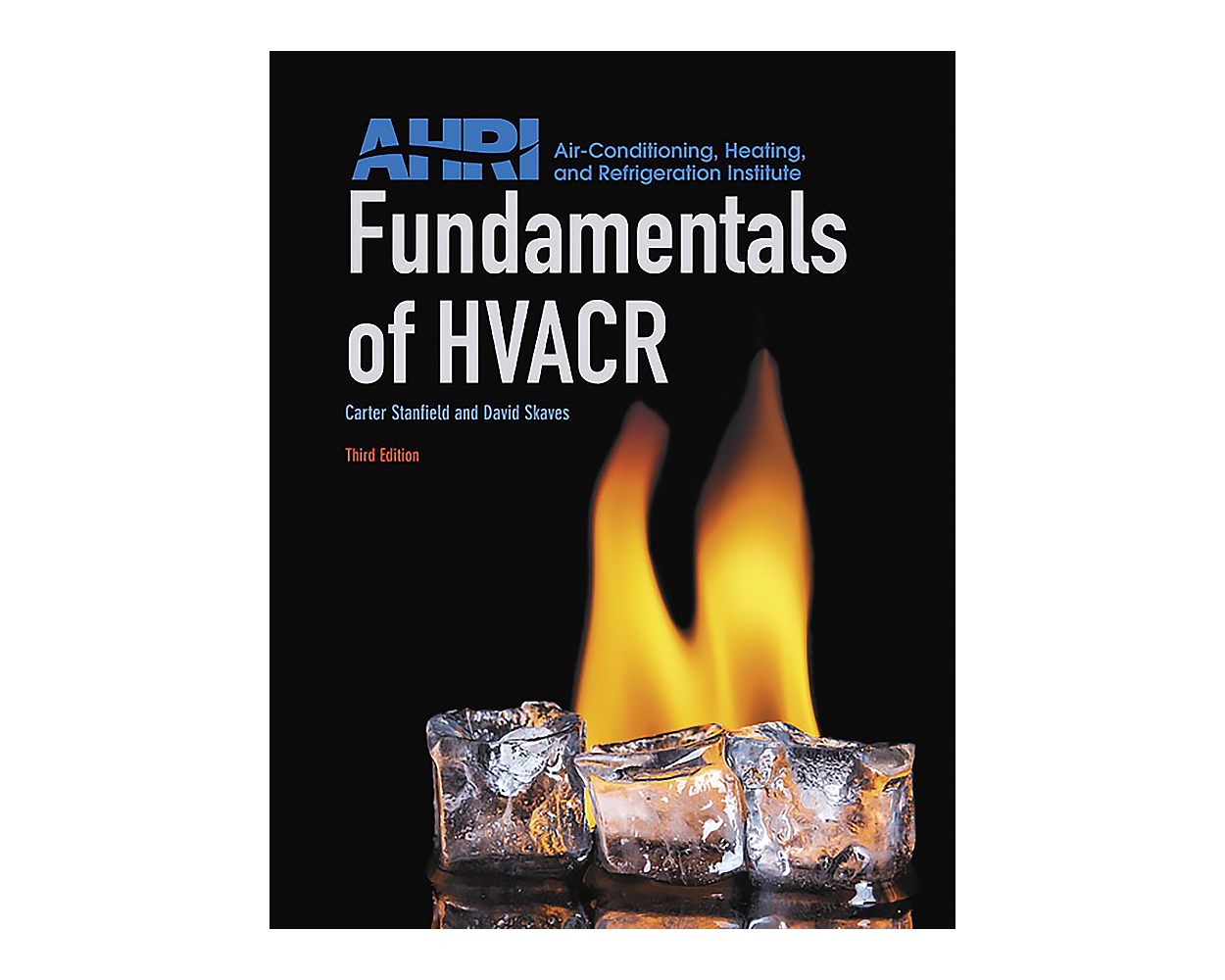Fundamentals of HVACR, 3/e (1 COPY LEFT)
Written in a style thatis easy to understand, this Third Edition of Fundamentals of HVACR introduces the principles of heating, ventilation, air conditioning, and refrigeration. Units are short and digestible, presenting complex material in a concise, straightforward manner without ever dumbing down its topics. Compared to other, similar texts, Fundamentals of HVACR is visually stunning, featuring 2900 supporting photographs, illustrations, drawings, and diagrams–most of them in full color. The Third Edition has been revised to reflect expanded coverage of electricity, motor controls, motor applications, new technologies, regulations, and changes in the HVACR market, and remains the most up-to-date HVACR text available.
KEY TOPICS: Fundamentals; HVACR Science; Refrigeration Systems and Components; Refrigeration Practices; HVACR Electrical Systems and Components; Air-Conditioning Systems; Heating Systems; Heat Pump Systems; System Design, Sizing, and Layout; Commercial Environmental Systems; Commercial Refrigeration Systems; Installation, Maintenance, Service,and Troubleshooting
Fundamentals of HVACR is designed for Introduction to Heating, Ventilation, Air Conditioning, and Refrigeration (HVACR) courses, and is comprehensive enough to use across the entire HVACR program.
Fundamentals of HVACR, Third Edition, comprehensively introduces the fundamentals of HVACR in digestible units, supported by hundreds of colorful visual aid
- NEW! A new unit on electrical troubleshooting provides practical, detailed information on troubleshooting the electrical component of HVACR systems, while acting as a capstone unit for the Electrical section of the text.
NEW! Contains a new unit on mini-split, multi-split, and variable refrigerant flow systems, a significant emerging component of the HVACR market.
NEW! A new unit on motor controls brings all discussion of motor controls into one concise unit, aligning with feedback from instructors regarding efficient teaching methods.
NEW! A new unit on motor application and troubleshooting provides practical, detailed information regarding motor applications in the field and how to troubleshoot them.
UPDATED! Expanded coverage of digital gauges, nitrogen brazing, confined space safety regulations, new refrigerants and refrigerant regulations, high-flow CoreMax valves and procedures, and environmentally friendly procedures for leak testing using nitrogen/hydrogen mixtures maintain the text’s status as the most up-to-date HVACR text on the market.
2900 visual aids provide support throughout the text, including full-color illustrations, photographs, drawings, and diagrams.
A unique section on HVACR science clearly explains the application of fundamental scientific concepts essential to understanding air conditioning system operation.
Superb coverage of the basic refrigeration cycle and refrigeration components is included.
Detailed explanations for using service valves to access all types of refrigeration systems are included.
Referenced EPA Certification Outline shows a cross-referenced listing of each specific EPA competency document.
Basic Building Construction chapter provides students with enough information to ensure safe installations.
Discussion of all types of systems covering installation, maintenance, and troubleshooting is consolidated in one part of the text.
Learning objectives enable students to focus on what they should achieve by the end of the unit.
Unit introductions are organized topically, progressing from basic fundamentals to practical applications, with each topic supporting the next.
Unit summaries pull together main points and reinforce learning.
Service tickets provide examples of types of problems that service technicians encounter on the job, along with explanation of how the information in each unit helps solve those problems.
Review questions help students assess their understanding of the material.
Safety tips highlight safety issues relevant to the immediate material.
Service tips offer practical applications to help technicians perform their jobs more efficiently.
Cautions contain information students should know to properly operate and protect equipment.
Tech tips provide extra detail and information for students who want to go beyond the minimum knowledge needed.
- Up-to-date coverage of units in several sections.
| Price | $284.95 |
|---|---|
| Customer Service | Customer ServiceWe're Here To Help Call us anytime during our customer service hours... Monday through Friday - 8:30 am to 4:30 pm (Pacific) Order Questions: TOLL FREE, 800-273-7375 (Outside the U.S. call 818-887-7828). Our Address: 8001 Canoga Avenue Canoga Park, CA 91304 US Phone: 800-275-2665 E-mail: sales@buildersbook.com
|
| Description | Fundamentals of HVACR, 3/e Written in a style thatis easy to understand, this Third Edition of Fundamentals of HVACR introduces the principles of heating, ventilation, air conditioning, and refrigeration. Units are short and digestible, presenting complex material in a concise, straightforward manner without ever dumbing down its topics. Compared to other, similar texts, Fundamentals of HVACR is visually stunning, featuring 2900 supporting photographs, illustrations, drawings, and diagrams–most of them in full color. The Third Edition has been revised to reflect expanded coverage of electricity, motor controls, motor applications, new technologies, regulations, and changes in the HVACR market, and remains the most up-to-date HVACR text available.
KEY TOPICS: Fundamentals; HVACR Science; Refrigeration Systems and Components; Refrigeration Practices; HVACR Electrical Systems and Components; Air-Conditioning Systems; Heating Systems; Heat Pump Systems; System Design, Sizing, and Layout; Commercial Environmental Systems; Commercial Refrigeration Systems; Installation, Maintenance, Service,and Troubleshooting
Fundamentals of HVACR is designed for Introduction to Heating, Ventilation, Air Conditioning, and Refrigeration (HVACR) courses, and is comprehensive enough to use across the entire HVACR program. Fundamentals of HVACR, Third Edition, comprehensively introduces the fundamentals of HVACR in digestible units, supported by hundreds of colorful visual aid
|


